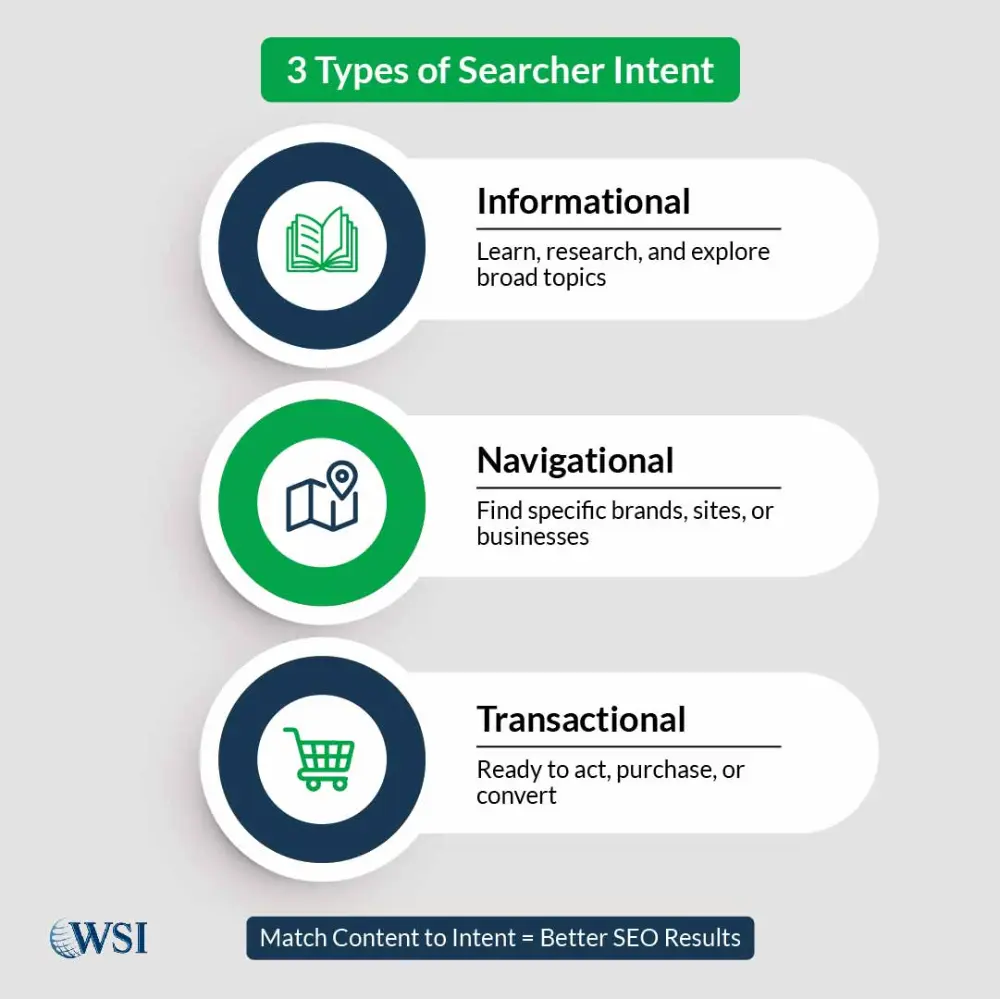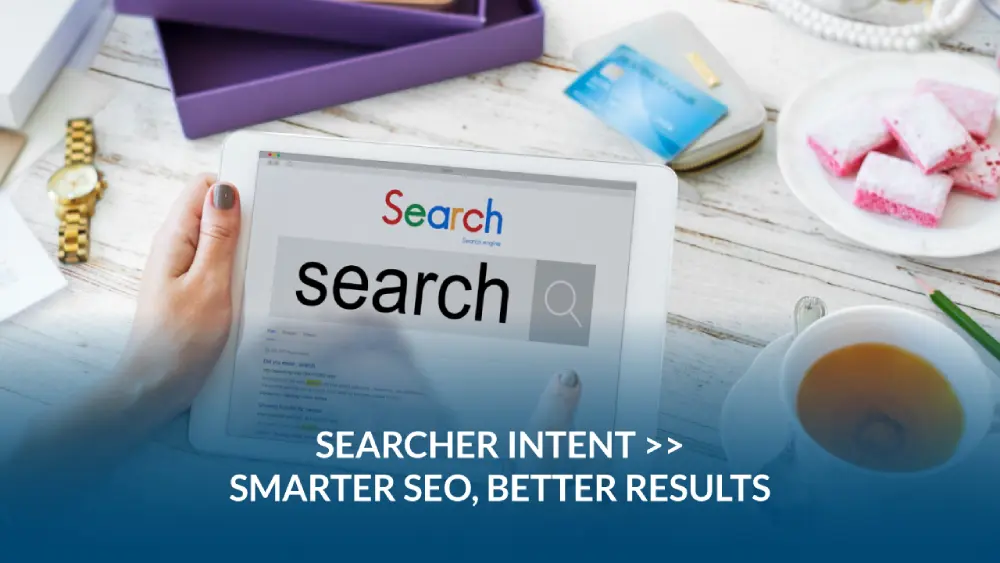Search Engine Optimization is often described as optimizing for algorithms, but the truth is more practical: your site should be optimized for people. Search engines like Google and Bing refine their systems to match user needs, not to reward those trying to “game the system.” That’s why focusing on searcher intent, understanding the why behind a query, leads to stronger visibility and more meaningful traffic.
Key Takeaways:
- SEO is about matching your content to user intent, not tricking algorithms.
- Searcher intent falls into three categories: informational, navigational, and transactional.
- Mapping content to these intent types strengthens your funnel and attracts qualified leads.
Finding the Right Answer: Searcher Intent
Having the best answer won’t help if you don’t know the question being asked. In search marketing, that’s where intent comes in. Every query fits into one of three categories: informational, navigational, or transactional. By aligning your content with each type, you create a roadmap that guides prospects from curiosity to conversion.
Optimizing for Informational Searching
Informational searches are the widest part of the funnel. These users aren’t shopping yet, they’re learning, exploring, and validating ideas. Think of them as researchers who want context before committing to a solution. If your business shows up consistently during this stage, you earn trust before competitors even enter the conversation.
This stage is where content marketing delivers the most long-term value. The blogs, videos, FAQs, podcasts, and guides you create here act as “entry points” into your brand. They don’t need to push a sale; instead, they should position your business as knowledgeable and approachable. Over time, informational content builds domain authority in search engines and credibility in the eyes of users.
Practical steps for this stage:
- Educational blogs: Publish articles that answer customer FAQs, explain concepts in plain language, and give context to industry trends. For example, a financial advisor might publish “What is the difference between TFSA and RRSP?”
- Videos and explainers: Short videos on social platforms or YouTube work well here. Visual formats make complex topics easy to digest and help you appear in both regular and video search results.
- Customer-driven proof: Showcase reviews, testimonials, or product walk-throughs that answer early questions prospects may have.
- Interactive content: Consider adding quizzes, calculators, or checklists, these help visitors self-qualify and spend more time engaging with your brand.

Want more visibility at the top of the funnel?
Create content that positions your business as the go-to resource for early-stage prospects.
Navigational searches are all about brand recall and trust. Users already know who you are, or at least they think you exist, and they’re trying to get to your website, location, or official profile. If you’re not visible when someone types your brand name, it creates friction and raises questions about legitimacy.
This stage plays a critical role in mid-funnel engagement. Even if people first found you through an informational query, they’ll likely run a navigational search before making contact. Strong navigational visibility reassures them that your business is established, professional, and consistent across digital channels.
Key practices include:
- Branded search optimization: Make sure your brand name appears consistently in page titles, meta descriptions, headers, and content across your site. This helps search engines match your brand queries directly to you.
- NAP consistency: Your Name, Address, and Phone Number must be identical everywhere, your website, Google Business Profile, directories, and social platforms. Even small differences (like “St.” vs. “Street”) can weaken authority signals.
- Branded content assets: Publish branded articles, press releases, thought leadership posts, and social updates. These not only fill the search results page but also reinforce brand credibility.
Google Business Profile optimization: Add services, posts, images, and FAQs. Many navigational searches will trigger your profile before your website.

Is your brand easy to find online?
Make sure your business dominates navigational searches so prospects always land on your site.
Optimizing for Transactional Searching
Transactional searches sit at the bottom of the funnel. These users are ready to buy, book, or request a quote. Their searches usually include terms like “buy,” “near me,” “best,” or specific product/service names. At this point, the competition is fierce, because this is where the money changes hands.
Winning transactional searches isn’t only about showing up. You need conversion-focused content and seamless user experience to secure the lead or sale. A visitor who arrives at this stage expects fast-loading pages, clear offers, social proof, and an easy path to act.
Steps to succeed:
- Keyword mapping: Sort transactional keywords by competitiveness and prioritize them strategically. For instance, focus on “plumber Toronto 24/7” before tackling broader terms like “best plumber.”
- Landing page design: Each high-value keyword should connect to a dedicated page, not just your homepage. That page should feature strong offers, clear calls to action, testimonials, and simple contact forms.
- Structured offers: Use discounts, free consultations, or clear pricing breakdowns to stand out. Show why your solution is the best choice in a crowded market.
- Build authority over time: Start with less competitive but high-intent keywords, build content and backlinks around them, and gradually expand into the toughest terms. This layered approach strengthens your domain authority.
- Technical performance: Speed, mobile optimization, and security all matter more here. A user ready to purchase won’t wait for a slow or clunky page to load.

Turning Intent Into Conversions
A strong SEO strategy works across all three intent types. Informational content brings people into your orbit, navigational consistency ensures your brand is found, and transactional focus drives conversions. The businesses that grow are the ones that match every search stage with the right content and structure.

Want to attract the right customer at the right time?
Our team will align your SEO strategy with searcher intent and drive results across the funnel.


